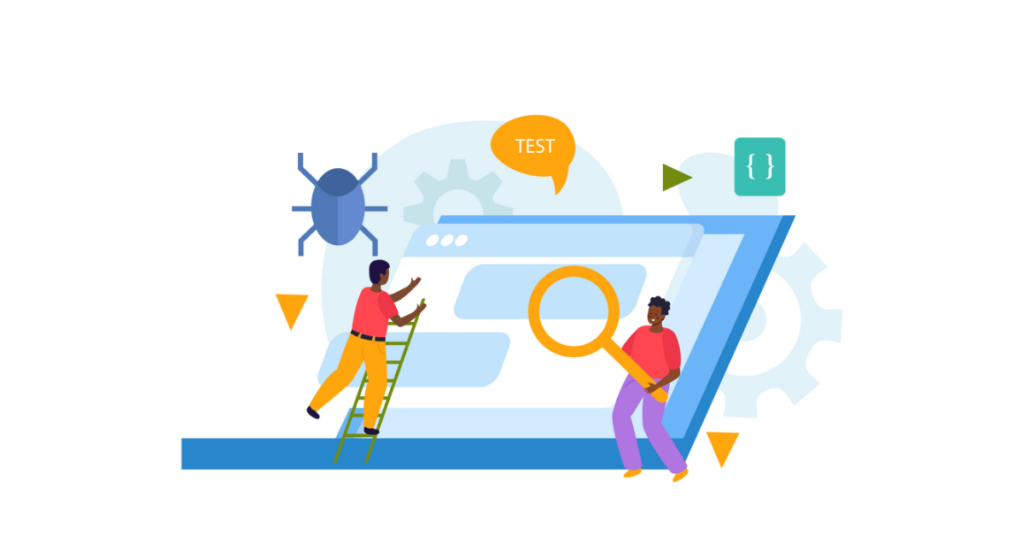In the fast-moving environment of software development, efficient management of bugs is prominent for delivering functional and quality software products on time.
Bug triage meetings provide a well-structured approach to assist the development team in assessing, prioritizing, and planning the fixing of software bugs. Such meetings provide a junction between defect identification and fixing.
They take care that everyone in their teams is on the same page in terms of urgency and priority of different issues. Hence, the process for bug resolution that becomes strategic and structured contributes to such meetings.
By doing so, teams are well able to prioritize what workload has to be allocated to where, hence making the route from problem recognition rather smooth to solution implementation.
What is Bug Triage Meeting?

Definition of Bug Triage Meeting
Bug triage is an important element within the SDLC. Team members get together to detect, prioritize, and act on the management of software bugs or problems.
It is a review meeting where new and existing bugs are checked for a systemically driven resolution process based on impact on the system, urgency, and available resources.
The process is similar to a medical triage system where patients are sorted for treatment according to the seriousness of their condition.
Purpose of Bug Triage Meeting
The objective of every bug triage meeting is to make the bug management process smooth by ensuring that critical bugs that might have a significant effect on the performance of the system or user experience are attended to in a timely fashion.
These meetings improve the communication among the team because they provide mutual understanding of the issues facing a project.
Besides, it ensures the quality of the software is observed by ensuring all bugs reported are reviewed and addressed based on their severity and impact to a project timeline and deliverables.
Importance of Bug Triage Meeting
Bug triage meetings are important in preventing large numbers of unresolved bugs that will result in software bloat and degraded performance.
In this case, prioritization allows a team to work on key problems whose resolution, in case of non-resolution, might cause bigger problems downstream, like security breaches or significant failures in functionality.
These meetings also provide them with a platform to review resource allocation, ensuring adequate man-hours and time allocation on the high-priority tasks. Regular triage meetings thus keep the development cycle rolling by keeping away from the situation where a project gets delayed for some unknown bug fixes.
Key Stakeholders in Bug Triage Meeting

Product Managers
Product Managers play a crucial role in bug triage meetings. They help in defining the priority of bugs based on the product roadmap and customer needs.
Their knowledge about the product’s vision allows them to make informed decisions on whether a bug fix should be prioritized over new features or if it can be scheduled for later resolution. They also communicate the impact of bug fixes on release timelines to stakeholders and clients.
Developers
Developers are concerned with the technical evaluation of the bugs that are reported. They provide insights on complexity and estimated time to resolve bugs in triage meetings.
They assess the technical feasibility of proposed solutions and point out possible risks associated with modifying the code. Their expertise is important in judging how best to solve software problems effectively and efficiently.
Quality Assurance (QA) Team
Bug triage meetings require the involvement of a QA team in order to make detailed reporting on software errors, such as reproduction steps and screenshots or logs that help in the assessment of each issue.
They are responsible for priority ranking according to testing results and severity ratings with respect to system functionality and user experience. The QA team also confirms that the bug is resolved to ensure that the fixes indeed solve the problem and do not create more issues in the system.
Because they are constantly interacting with the product throughout the development cycle, they are better positioned to notice inconsistencies and areas for improvement that should be dealt with during triaging.
Process of Bug Triage Meeting
Bug Intake
Bug intake is one of the preliminary steps of a bug triage meeting. It is the phase in which new bugs are introduced by members of the team, most likely testers or end users of the application who have reported the issues. Any bugs that are reported are noted in detail to include all information about it.
Normally, all documentation includes the origin of the bug, the observed behavior versus the expected behavior, the severity of the issue, and any screenshots or logs that might help to explain the problem.
This detailed documentation is essential as it lays the foundation of all other future steps of the bug triage process.
Bug Analysis
When all new bugs have been submitted and documented, the team begins the analysis phase. Here, developers and QA engineers test the bugs. Each bug is analyzed in order to validate the bug and determine the root cause behind it.
This may involve reproducing the bug so as to see it with your own eyes and searching in the codebase where the problem may be originating.
This investigation may well aim to provide information that is sufficient to make informed decisions in the subsequent phase of prioritization. In a few cases, quick fixes may be identified in the course of analysis and thus allocated immediately for fixing.
Bug Prioritization
Bug prioritizesation is a critical component of the bug triage meeting where the team decides the urgency and the order in which the bugs should be addressed. Prioritization is typically based on several factors, including:
- Severity of the bug: How significant is the bug’s impact on the application’s functionality?
- User impact: How many users are affected and to what extent?
- Complexity of the fix: How difficult is it to resolve the bug?
This structured approach helps ensure that resources are allocated efficiently, focusing first on bugs that have the most significant impact or that compromise critical functionalities.
Benefits of Bug Triage Meetings
Streamlining Bug Tracking
Bug triage meetings significantly streamline the process of bug tracking. By regularly reviewing and categorizing bugs, teams can maintain a clear overview of all known issues.
This organization prevents bugs from being overlooked and makes it easier for team members to access information about each bug’s status. Regular triage sessions also help in aligning the team’s focus towards common goals and deadlines, ensuring a systematic approach to bug management.
Efficient Bug Resolution
The process of structured bug triaging at hand improves the efficiency of bug resolution. By giving priorities to bugs, teams are better positioned to use their time and resources in the resolution of the most critical issues first.
This speeds up the process of resolution besides aiding in workload management. Thus, quicker turnarounds can be achieved, ultimately improving the pace of the development cycle.
Improved Software Quality
Ultimately, these bug triage meetings result in improved quality of software. Early detection and resolution of bugs in the development cycle prevent small problems from snowballing into large critical issues.
Regular review and updating about bug status instill continuous improvement. In addition, following up on bugs in an orderly fashion reduces the possibility of their recurrence, hence developing more stable and reliable software products.
Book a Demo and experience ContextQA testing tool in action with a complimentary, no-obligation session tailored to your business needs.
Conclusion
Overall, conducting a bug triage meeting is one of the most integral parts of successful software development. The structured approach assures that the team fixes all bugs having the greatest impact first and provides a quality product for end customers.
The definition of bug priority and a decision on how it should be fixed help the team to focus on further improvements, optimize the development process, and avoid probable delays.
This meeting thus embodies collaboration, effective communication, and attention to details in the effective tracking and resolving of issues. Regular bug triage meetings hence help not only in handling current problems with the software effectively but also in improving processes for future projects.
Also Read - Making Your Results Visible – A Test Result Dashboard and Comparison Tool
We make it easy to get started with the ContextQA tool: Start Free Trial.
